Stephens College Fashion: A Retrospective
For nearly ninety years, the Stephens College fashion program has been a standout. As the program prepares for its eightieth fashion show, faculty, students, and alumnae reflect on its influence on the industry as well as the individual.
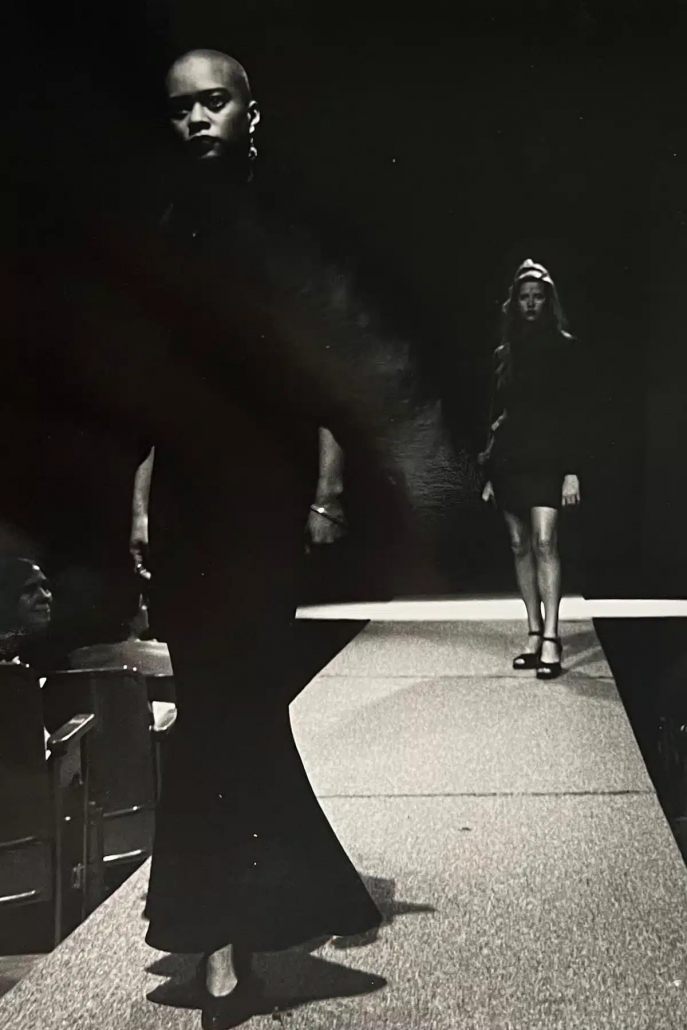
Photographed by Roger Jones, the model is exuding power and grace in a floor-length gown and black pointed heels.
Photo courtesy of Stephens College
Step into a time capsule and journey back almost ninety years, where the seeds of style were sown at Stephens College, igniting a legacy that continues to dazzle and inspire. Looking back on decades of fashion excellence, it is a reminder of the rich history and impact this institution has had on the world of fashion education and the budding professionals produced here.
Stephens’ fashion program was founded in 1935, but the inaugural fashion show didn’t hit the runway until 1944. This year marks the eightieth anniversary of The Collections, the student designer fashion show.
The creation of this endeavor can be traced back to a compelling conversation between Myra Jervey Hoyle, fashion department head, and then-Stephens College President James Madison Wood. Concerned about what she considered a lack of refinement in student attire, Hoyle brought to Wood’s attention the necessity for courses in dress, and after some consideration, Wood agreed wholeheartedly. In a letter to the dean of curriculum, Dr. Charter, she wrote: “The response of the students to this new department has been much more than I ever dreamed possible for the first year.” It was evident from the outset that the goal was met with enthusiasm and hunger for refinement.
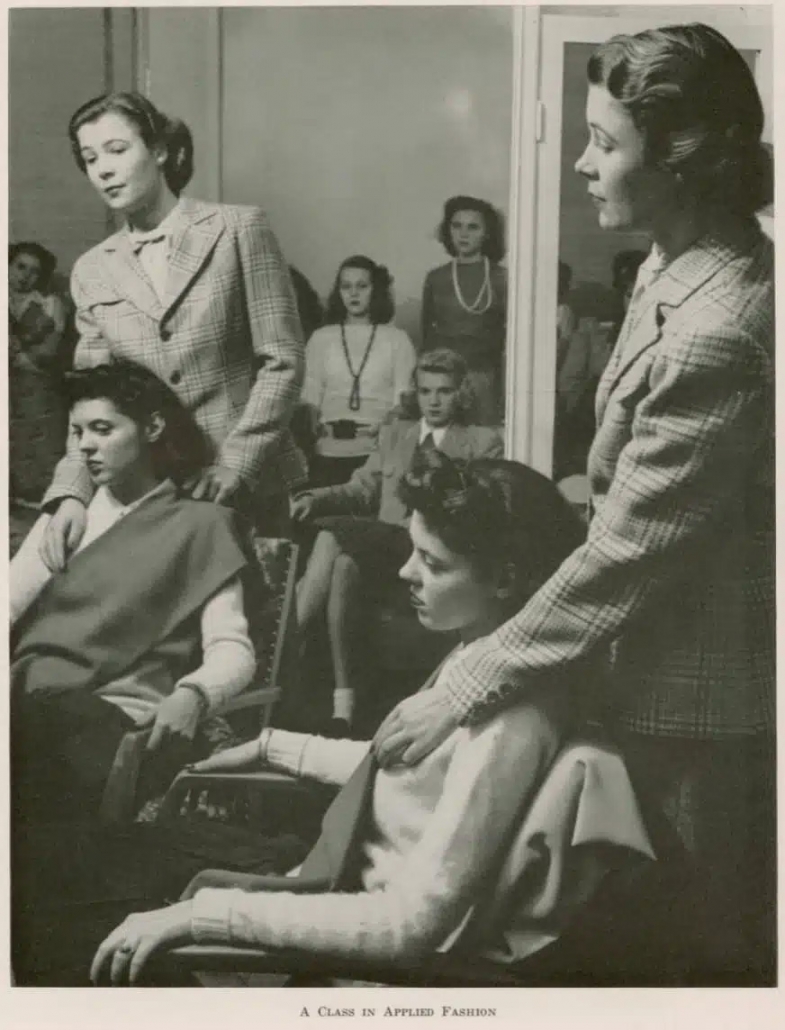
A group of impeccably dressed students in an Applied Fashion course exuding a poised demeanor, listening intently to their professor.
Photo courtesy of Stephens College
President Wood, recognizing the importance of practical knowledge in grooming and sensible dress, brought on Muriel King, one of the leading fashion designers of her time. King was essential to the organization of the staff and setting the tone for the development of the program. She and her staff took over the departments related to sewing, fashion design, and personal appearance. Their commitment and dedication to the students set a solid foundation for the success of the program.
King envisioned a future where Stephens students would craft their unique style identities, transcending regional stereotypes and embracing their innate allure. “Let the East and the West have their predominant styles, California her sport clothes and New York her dress fashions,” Patricia Leet Hungerland, King’s representative and coordinating chairman of the staff, remarked. “The fact does not bar Stephens students, representing the college woman of the middle west and of the nation, from the opportunity of developing their own style, or styles, suitable to their own needs, to their personalities, and to the locale.”
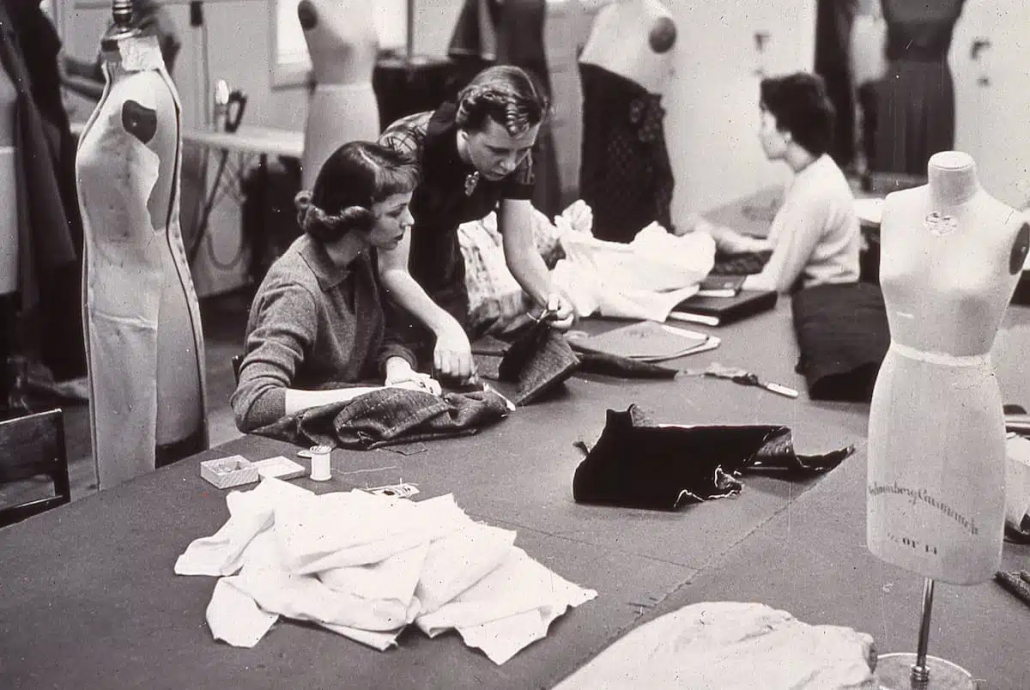
The work never ends as these two are bent over the worktable in the 1960s looking closely at a garment.
Photo courtesy of Stephens College
Reflecting on her journey, Carol Foley, of Dallas, Texas, chose Stephens College after seeing an article that showed a Stephens student making a garment and modeling it in one of her mother’s ladies’ magazines. Thinking, “Oh, wow,” she convinced her parents that was where she wanted to go. After graduating in 1955 with a two-year degree, she came back to teach patternmaking for 20 years.
Eventually, Foley was able to continue her education through the Stephens College Without Walls program, now the Graduate, Online and Certificate programs, and earned a Bachelor of Arts in 1980. Feeling that the pattern making textbook was subpar, she—along with Jeanne Powell, chair of the department at the time—co-wrote a new one that was used for some time by the department. Foley is a shining example of the passion and dedication fostered at Stephens and is still active in the Alumni Association in Dallas, Texas.
“I feel it is one of, if not the best and well-thought-out programs available to students out there. I have looked into and compared some others, [only] to be shocked at what they feel is adequate. I love being a continuing part of it!” Foley says.
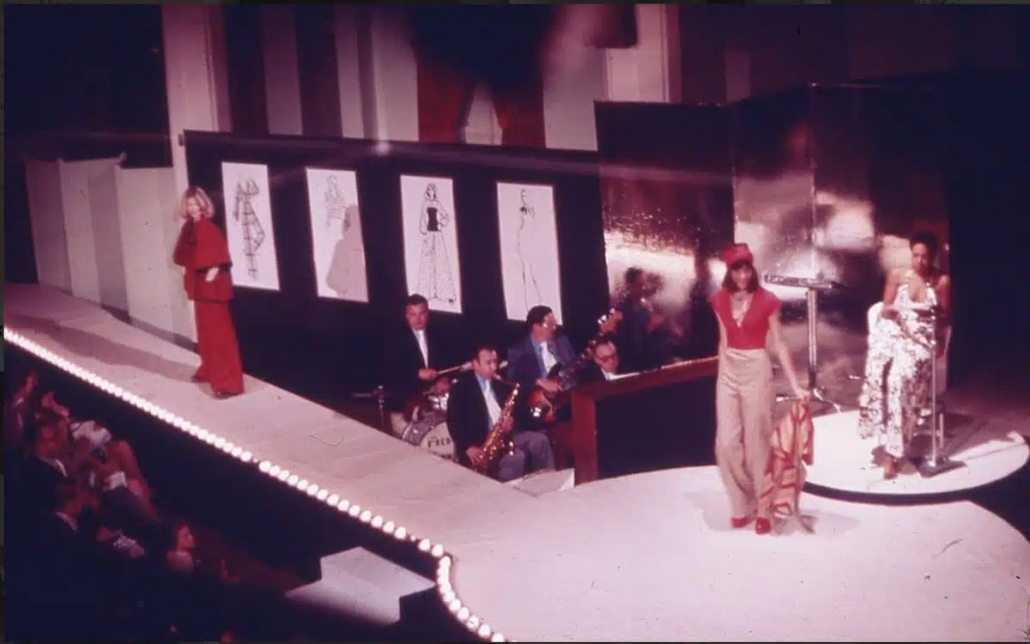
Two women strut down the runway in 1974 and light it up and red, surrounded by a live band and fashion illustrations. Can you see these styles on the streets now?
Photo courtesy of Stephens College
The vision for the program extended beyond mere instruction; it encompassed the cultivation of a sense of pride and confidence in personal presentation. The mission behind the program was fueled by a desire to elevate standards and empower individuals to embrace their innate elegance—eliminating one “Sloppy Joe” at a time.
“I work-study in the library archives, so one of my jobs for the fashion show has been to collect photos and information about its eighty years of history,” says Julia League, a junior Fashion Design and Product Development major from Andover, Kansas. “Seeing the history and the women who helped build and establish the fashion department makes me proud to be a part of what they started. Though the fashion department’s beginning aim was to help the women of Stephens College fit into the construct of what was proper at the time, I feel like the aim now is to break this mold of what is expected of us.”
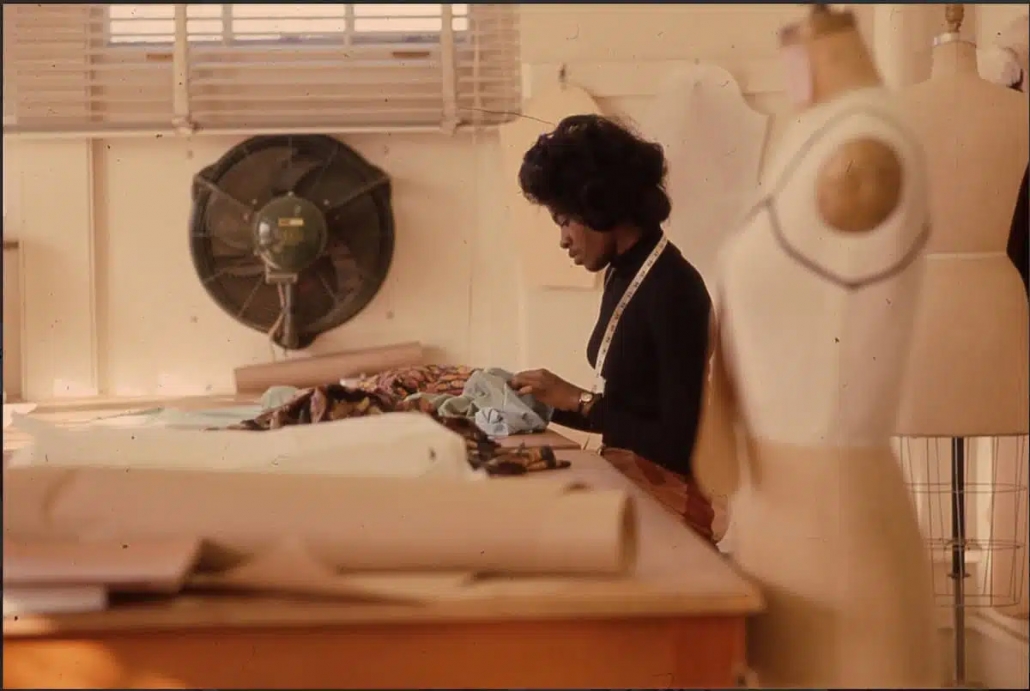
Some things never change—a young designer in the workroom surrounded by mannequins with a tape measure hanging around her neck in 1978.
Photo courtesy of Stephens College
Today, students immerse themselves in an environment where encouragement and support from their peers and instructors is paramount. In this setting, students engage in creative exploration and skill development. From experimenting with fabrics, mastering design techniques, or taking part in the production of the annual fashion show, students are surrounded by the community that is in this program. Instructors act as mentors, there for guidance or just a chat. Successes are celebrated and growing confidence and self-assurance are nurtured.
Claire Johnson, a junior Fashion Design and Product Development major from Kasilof, Alaska, says exploring Stephens’ history has deepened her appreciation for its evolution—and its trajectory.
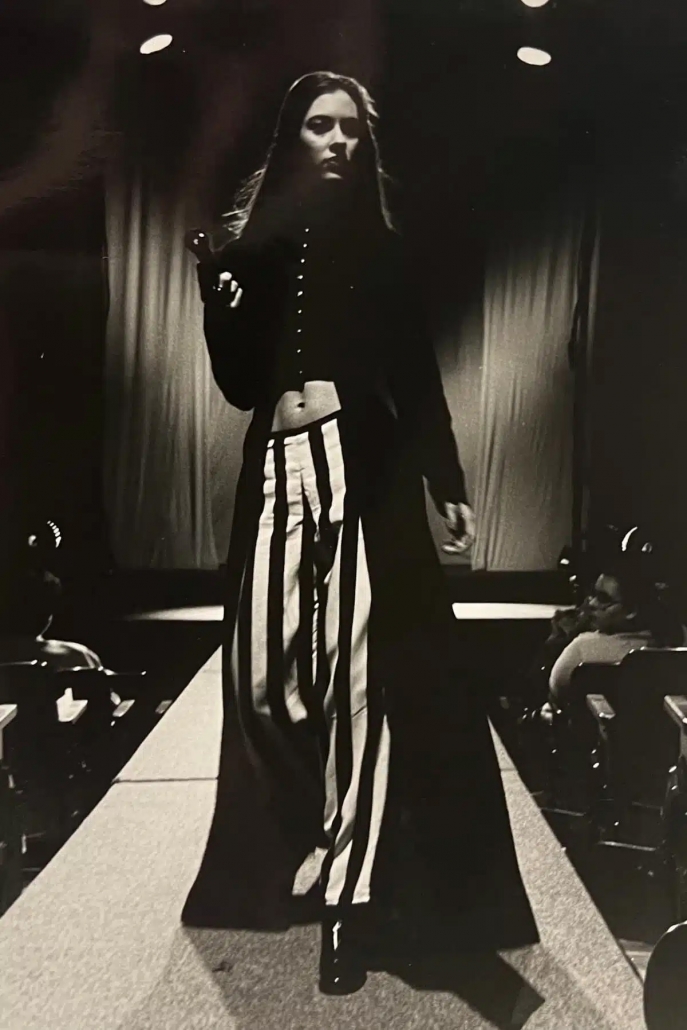
Photographed by Roger Jones in the 1990s, this model is giving everything as she walks down the runway in these striped wide-leg trousers and floor-length coat.
Photo courtesy of Stephens College
“In today’s world, supporting women and women’s education can still be perceived as a radical act, which underscores the importance of Stephens’ commitment to both for me,” Johnson says. “The school’s dedication to women’s education and its historic involvement in the fashion industry and teaching real-world skills involved in the fashion industry are significant. I’ll forever cherish the sewing, draping, patternmaking, and brand-building skills acquired here. In a world where we all buy and throw away clothes all the time, the fashion show serves as our collective moment to celebrate the immense dedication and hard work put into constructing beautiful garments.”
As the program prepares to celebrate the legacy of The Collections, the student designer fashion show, visionaries like Myra Hoyle, Muriel King, and Carol Foley, are remembered as part of the rich and exciting history. As the past is honored, the boundless potential of the future should be embraced, where creativity and innovation know no bounds and self-expression reigns supreme.
—————————————-
By Madison Marlow
Missouri Life : In Missouri History, Arts & Culture


